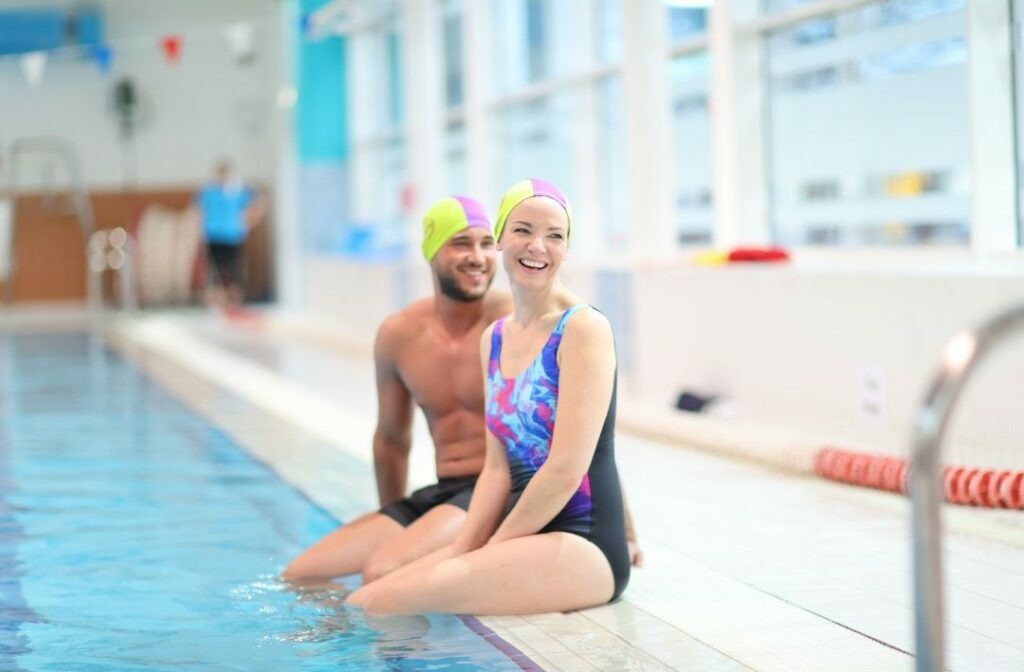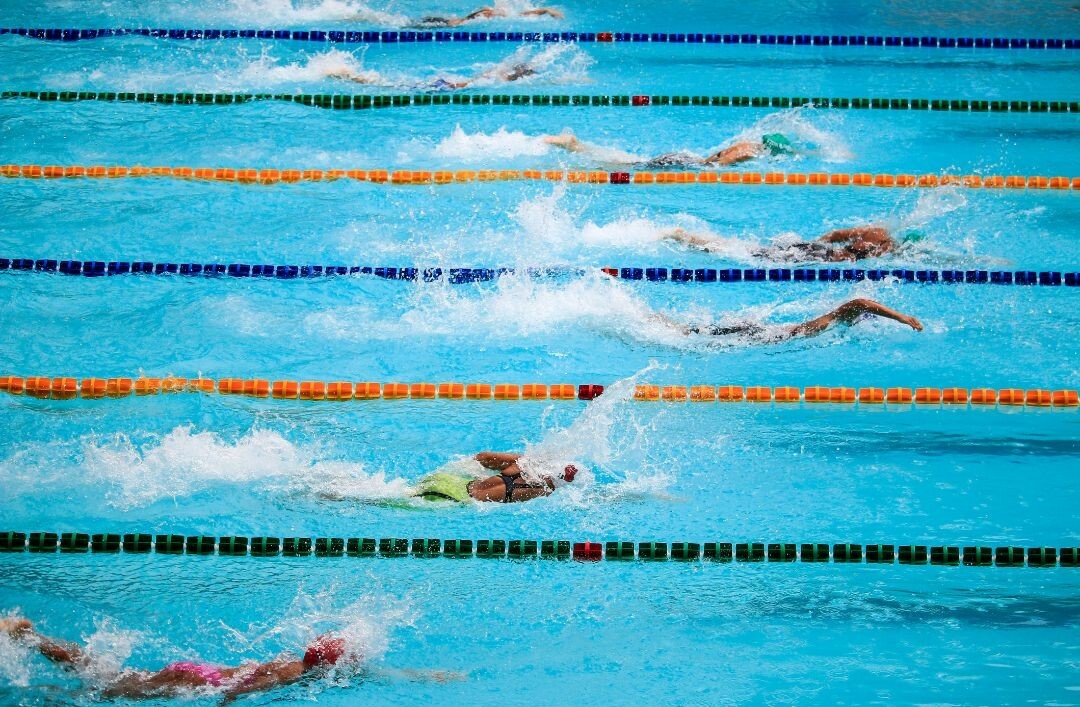It’s no secret that swimming can help you achieve a lean and toned body. Just look at Olympic swimmers; there’s something to it.
So, in this article, we’re going to explore swimming and muscle building. What types of swimming strokes target which muscles? Is building muscle by swimming a good idea? We’ll answer these questions and more below.
Does Swimming Affect Muscle Growth?

Simply put, yes. Swimming has the power to build and maintain muscle. Muscle mass is built when resistance or force is applied to specific muscle groups. Resistance happens when swimming by pulling and pushing against the force of the water, which is much denser than air.
When this type of stress is applied to the body, small tears occur in the muscle fibers. In turn, the body lays down more muscle, helping you come back stronger and leaner than before.
This also means that there are swimming effects on body shape. Since muscle takes up less room than fat and burns more calories, you may be able to transform the shape of your body through water exercises and swimming. However, it’s important to note that when building muscle, swimming is no match for weight lifting, which we’ll talk about in more detail below.
Types of Swimming Strokes and Each Muscle Used
Different swimming strokes use different muscles. This means that depending on your goals, you may prefer one type of stroke over another. The sections below offer more insight into the different swimming strokes and muscles used.
Butterfly Stroke
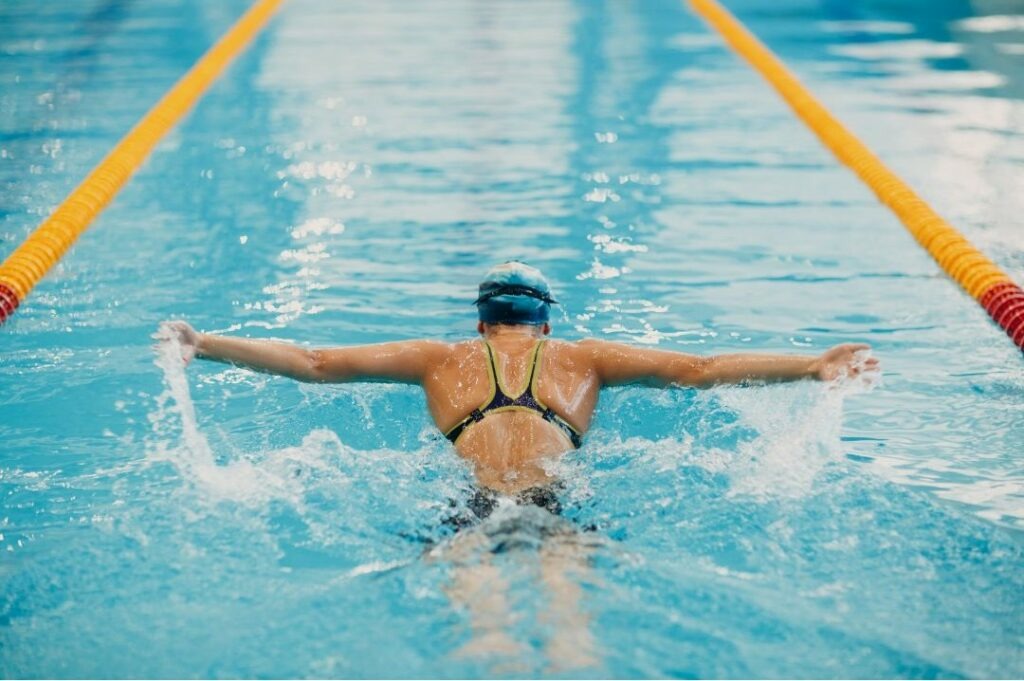
The butterfly stroke is considered the hardest stroke, and for a good reason. This stroke requires more muscles engaged at one time than any other stroke. Swum on the chest, both arms must move symmetrically, pushing the water outward and back. At the same time, the butterfly kick helps propel the body forward through the water.
As such, the butterfly stroke uses the chest muscles, upper back muscles, biceps, triceps, hip flexors, hamstrings, quadriceps, glutes, calves, and even the core.
Breaststroke
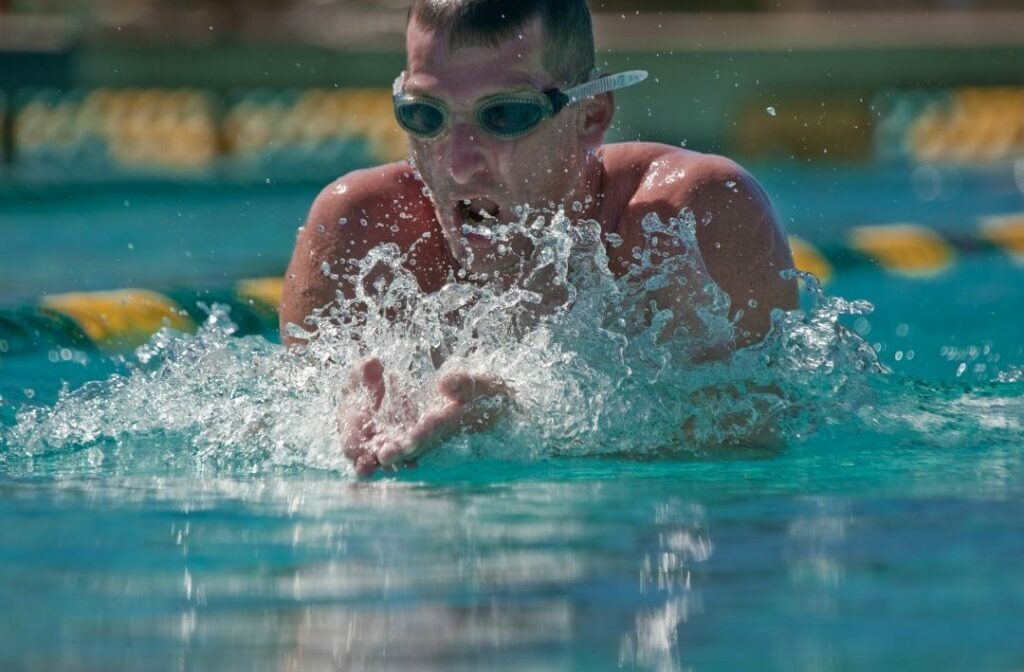
The reason the breaststroke primarily targets the upper body is because it largely involves arm movements. It also differs from the butterfly stroke in that during the butterfly stroke, the arms are brought forward and above the water. In turn, this requires much more force and coordination than the breaststroke.
Freestyle (Front Crawl) Swimming
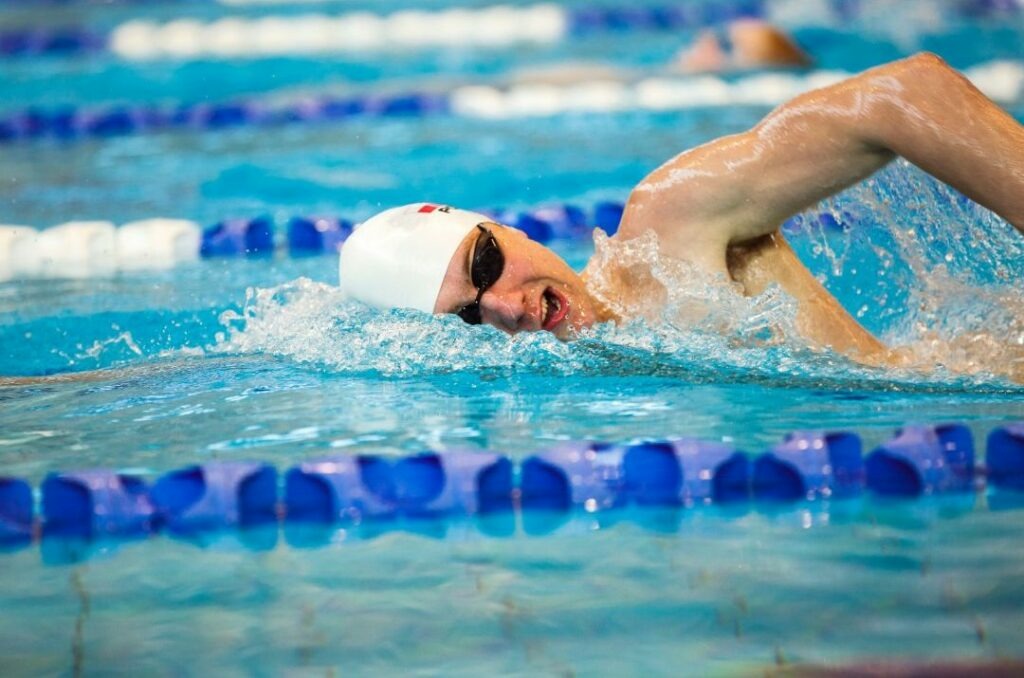
Sometimes called freestyle swimming, the front crawl is performed using continuous forward arm strokes and kicks, with regular breathing to the side.
Backstroke
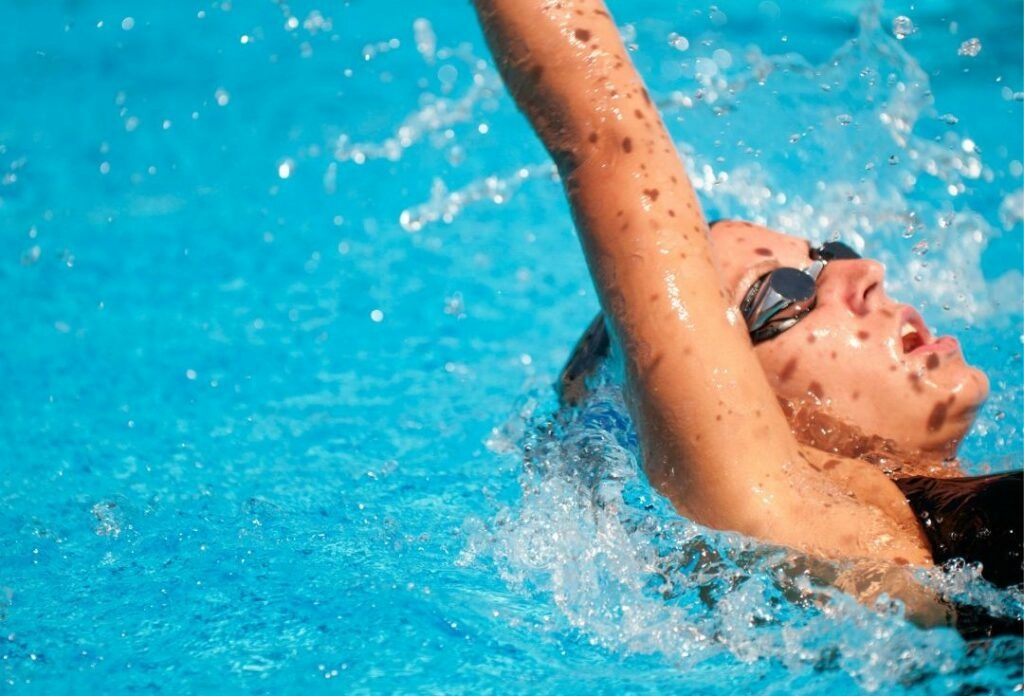
While you don’t need to worry too much about breathing for this stroke since the head is out of the water, the downside is that you can’t see where you’re going. Thus, swimmers who perform this stroke must have a good sense of their body’s direction when facing the opposite way.
Swimming vs. Weight Lifting for Muscle Building
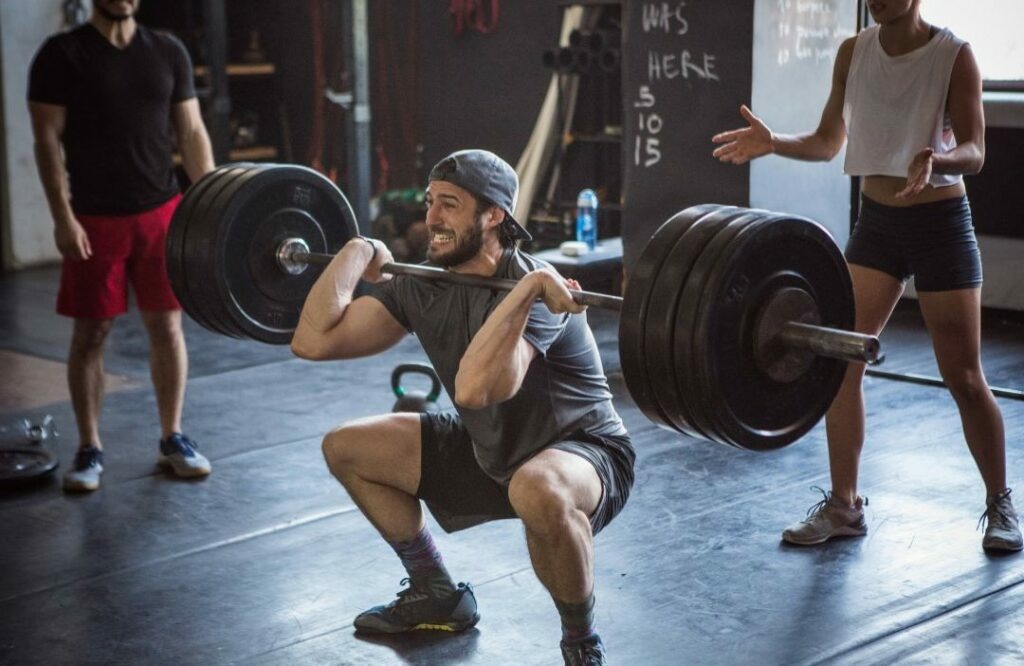
While swimming exercises to build muscle can enhance your physical health and body composition, it often doesn’t come close to the force applied when weight lifting. On the plus side, you can perform resistance training in the water with weights. In fact, this can be a really good option for those with joint pain or other injuries.
Sample Swimming Routine for a Full Body Workout
If you’re not sure what you should do at your next swimming session, here’s a quick full-body workout you can try.
Warm-Up
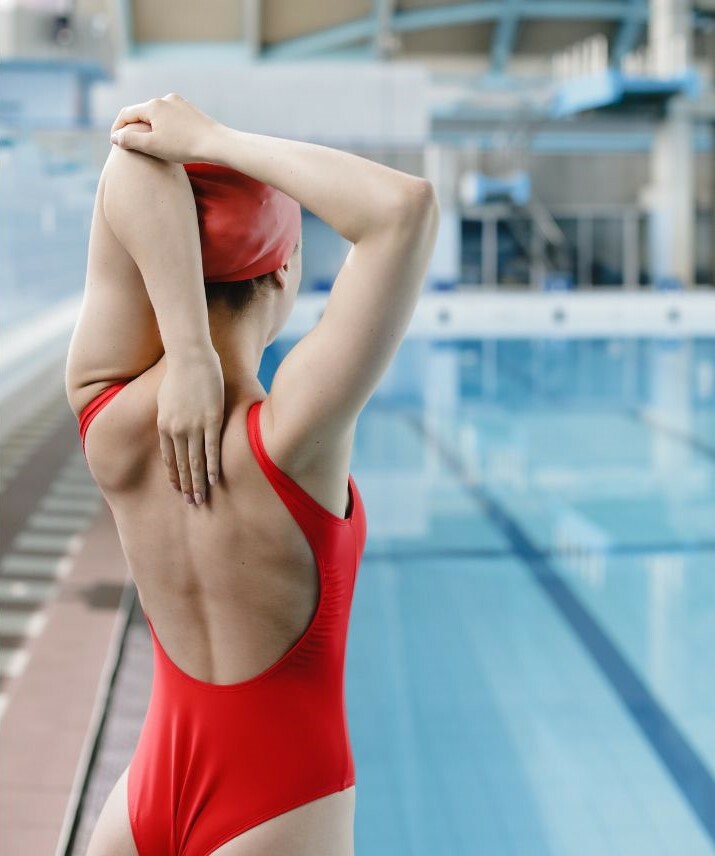
For warming up, try performing some dynamic stretches before getting in the water, such as lunges, torso twists, arm circles, and leg circles. Once in the water, you may benefit from a few leisurely laps using a stroke of your choice to get adequately prepared for your workout or even try your warm-up exercises in the pool.
Workout Routine
- Start with 5 to 10 lengths of the pool (depending on the intensity of your workout!) doing your favourite swim stroke to get yourself up to speed, this may be part of your warm-up or you can dive right in to full speed!
- Take a 30 to 60 second break.
- Move on to breaststroke for 5 to 10 lengths at top speed.
- Take a 30 to 60 second break.
- Get the arms and legs pumping in backstroke for 5 to 10 lengths.
- Take a 30 to 60 second break.
- Follow up with the butterfly stroke for 5 to 10 lengths.
- Take a 30 to 60 second break.
- Hit the front crawl for 5 to 10 lengths at the fastest pace you can.
- Take a 30 to 60 second break.
Cool Down
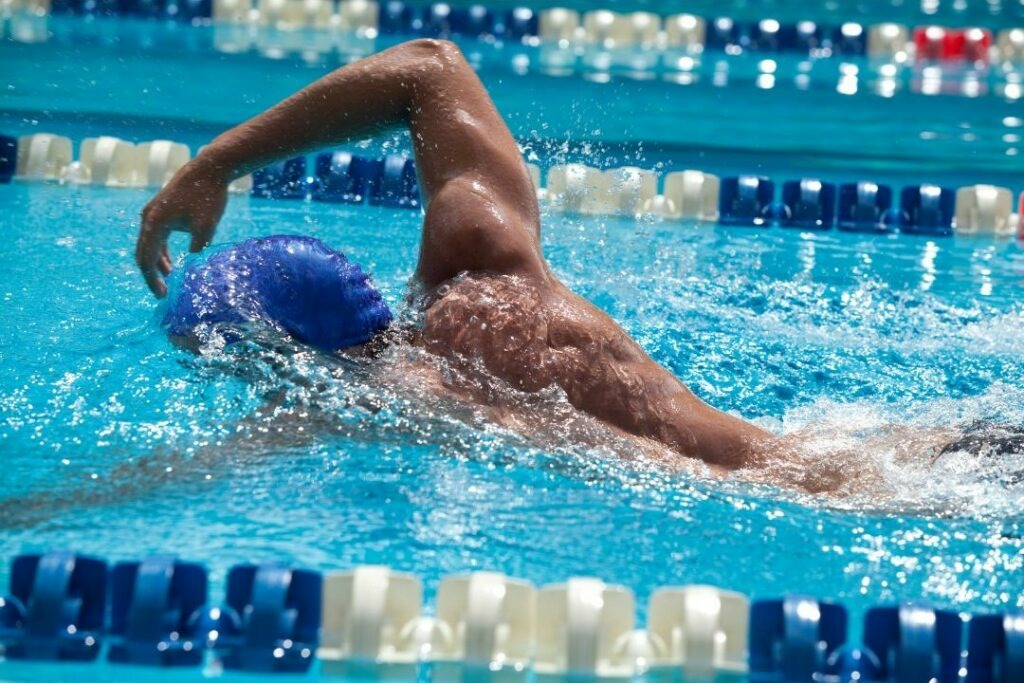
Complete your workout with a few leisurely laps to bring your heart rate down, or even walk in the pool for a length or two just to get your body readjusted and allow yourself to catch your breath.
It’s recommended for beginners to complete 20-30 laps in one session. If you’re more advanced, you might aim for 35- 60 laps. Pay attention to how you feel, and make sure to listen to your body throughout, working at a pace that suits you. Take as long of a break as you need between sets too.
Swimming for Muscle Growth FAQs
What is the best swimming stroke for building muscle?
Because the butterfly stroke engages the most muscles, this one is best for building muscle. With this swimming technique, you engage your whole body, which can contribute to increased leanness and tone.
Does swimming workout your abs?
Yes, swimming works your abs. The abs must be engaged to stay afloat and for proper technique in most strokes.
What swim stroke is best for abs?
The butterfly wins again. If you want to gain abs, the butterfly stroke is your best bet.
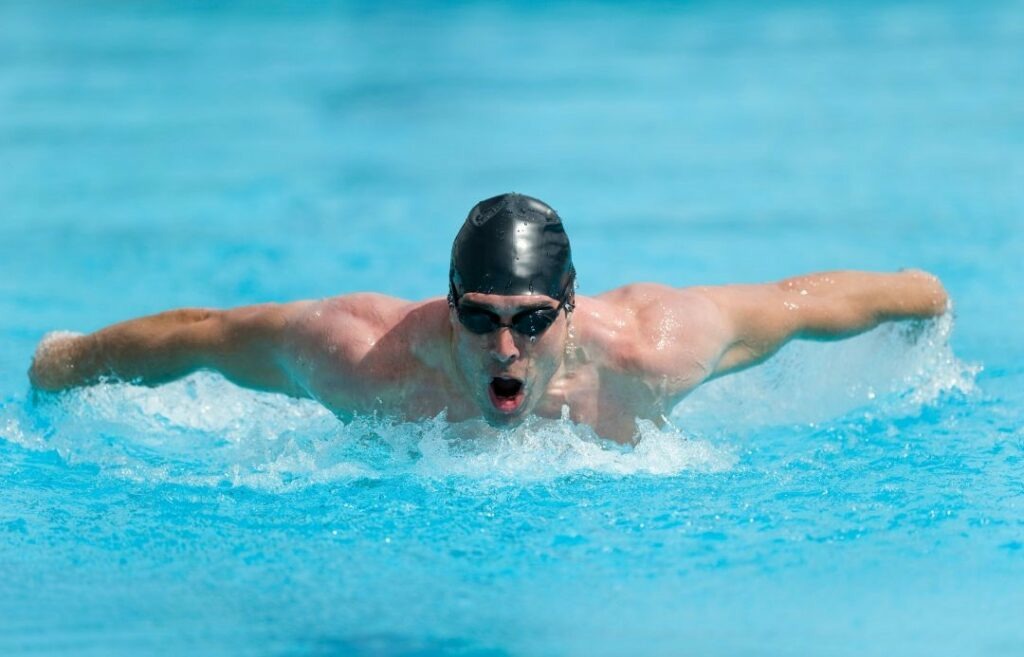
Does swimming make you lean or bulky?
Since swimming is primarily a cardiovascular activity, it won’t cause you to bulk up. Instead, you’re more likely to build lean muscle mass.
How many times a week should I swim to tone up?
If your goal is to tone up, you’ll want to swim at least four to five times a week. However, mixing your swim routine with weight lifting may help you tone faster and better.
Swim with Aura Leisure
